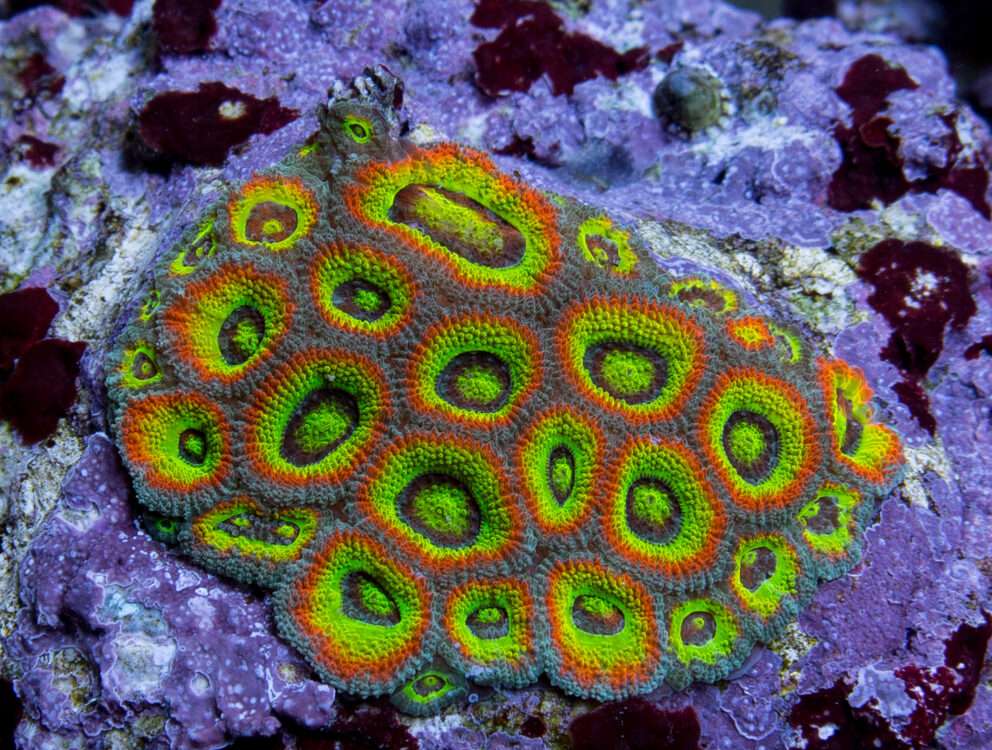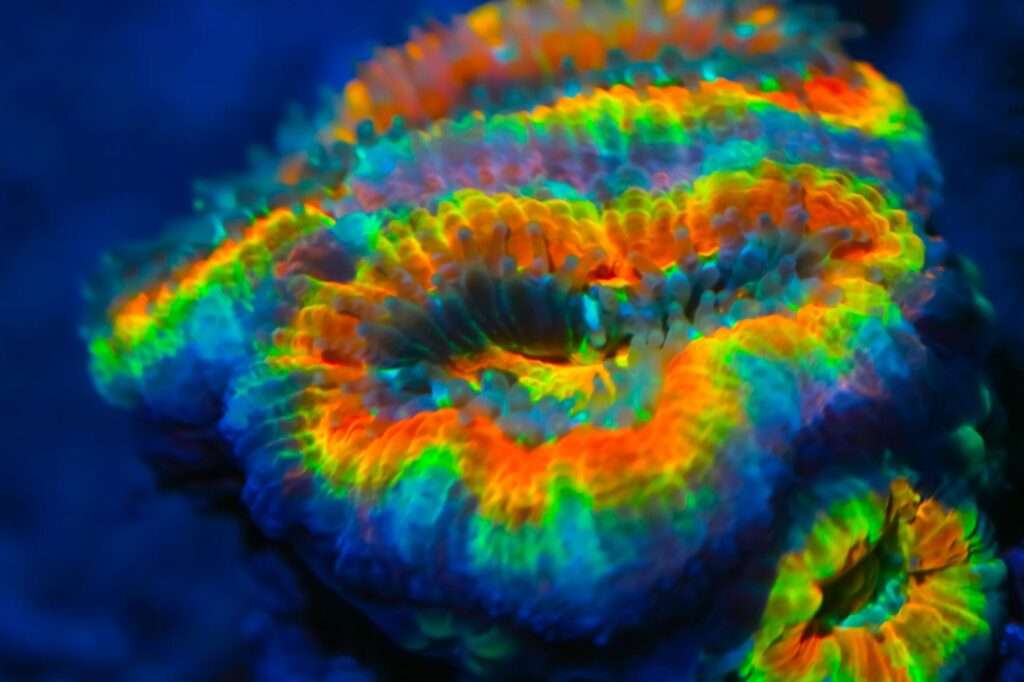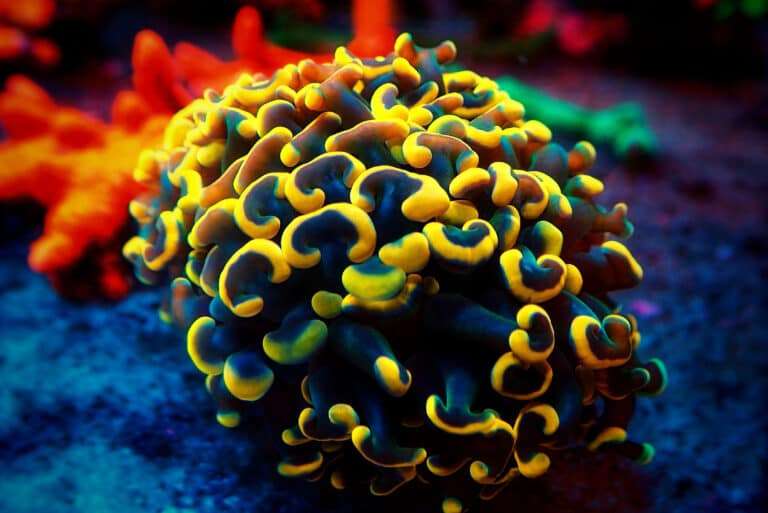
The lovely Micromussa Coral Micromussa sp. has gorgeous natural colors, while captive-bred individuals have even more spectacular colors. They are available in a variety of hues, including red, green, orange, blue, rust, mild gray, and pale tan. The color combinations can have a contrasting centre or can be pure colors. Some specimens feature a white, gray, or even speckling ring around the centre.
Micro Coral, Pineapple Coral, Moon Coral, Brain Coral, Closed Brain Coral, and Meat Brain Coral are some of the common names for the Micrommusa Corals.
Habitat
A small genus in the Mussidae family is called Micromussa. Vernon first described M. diminuta in 2002. Moll and Borel Best first described M. minuta in 1984. The Indo-West Pacific is where you can find Micromussa species. Australia and the western Pacific are both home to M. amakusensis. M. diminuta can be found from the Philippines to Sri Lanka. The Micromussa sp. inhabits water with a depth of 0 to 98 feet (0 to 30 m), and like other Mussidae, they live in a variety of reef settings. They spread their tentacles at night to feed.
Morphology
5 to 6 mm corallites make up the Micromussa sp. The fleshy polyp grows over a cupped skeletal structure called a corallite. The corallites are cerioid, which means they have thick walls that they share with one another. Compared to some of the other Mussids, the vibrant tissue is not as thick and meaty. They are available in a variety of hues, including red, green, purple, orange, rust, blue, brown, gray, mild and pale tan. The color combinations can have a contrasting centre or can be pure colors. If the fleshy polyps are retracted, it may be simpler to recognise them while choosing your Micromussa specimen. The Micromussa appears to be a hybrid of the Favia and Acanthastrea. Confusion is increased by the fact that the polyps often resemble Blastomussa merletti in appearance. To observe the skeleton structure and take an accurate measurement, placing the coral in extremely cold salt water can force the polyps to almost completely retract.
In Captivity

- Feeding
The Micromussa genus has evolved a number of feeding techniques. They get some of their nutrients from a marine alga called zooxanthellae through a symbiotic interaction. They can also take in dissolved organic substances and planktonic creatures as well as food particles from the water column. While feeding them once a week is acceptable, feeding them more frequently will help them grow much more quickly.
- Social Interactions and Compatibility
Other corals are aggressively attacked by the Micromussa genus. The Micromussa sp. gets along with other members of its species, but generally speaking, the aggressiveness of different species’ hues varies. They must be kept well apart from other corals, though. Their tentacles can harm adjacent corals at night when they emerge from the water. Soft corals shouldn’t be present in large quantities because they don’t perform as well in that environment.
Table





